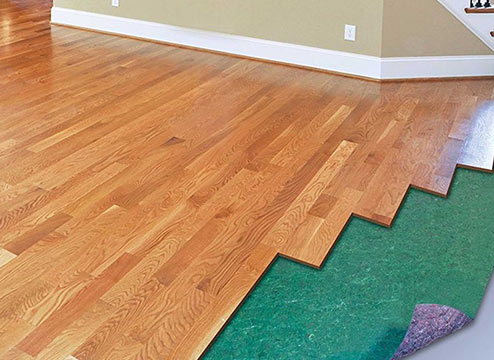
Introduction:
A crucial yet often overlooked component of a successful flooring installation is the underlayment. Flooring underlayment serves as the foundation for your floors, providing support, insulation, and sound absorption. In this guide, we’ll delve into the various flooring underlayment choices to help you make informed decisions for your home.
Understanding the Importance of Underlayment:
Before exploring the choices available, it’s essential to understand the significance of underlayment. This layer serves as a barrier between the subfloor and the flooring material, addressing issues such as moisture, uneven surfaces, and sound transmission. A well-chosen underlayment can significantly enhance the performance and longevity of your flooring.
Types of Underlayment Materials:
Flooring underlayment comes in various materials, each offering specific benefits. Common choices include foam, cork, rubber, felt, and specialized underlayments with moisture barriers. The selection depends on factors such as the type of flooring, the subfloor condition, and the desired properties like sound insulation or thermal resistance.
Foam Underlayment for Versatility:
Foam underlayment is a popular choice for its versatility and affordability. It is available in different thicknesses and densities, providing options for various flooring types. Foam underlayment offers good thermal insulation and sound reduction, making it suitable for a range of applications.
Cork Underlayment for Natural Resilience:
Cork underlayment is prized for its natural resilience and eco-friendly qualities. It provides excellent sound absorption, making it ideal for use in multi-level buildings or rooms where noise reduction is a priority. Additionally, cork has inherent moisture resistance, adding a layer of protection to your floors.
Rubber Underlayment for Impact Resistance:
Rubber underlayment is known for its durability and impact resistance. This type of underlayment is particularly suitable for areas with heavy foot traffic or where impact noise needs to be minimized. It is often chosen for use under hardwood or laminate flooring in busy households.
Felt Underlayment for Added Softness:
Felt underlayment is appreciated for its softness and comfort underfoot. It is commonly used with carpet flooring to provide an extra layer of cushioning. Felt underlayment also helps in leveling out minor imperfections in the subfloor, contributing to a smoother finished floor.
Moisture Barrier Underlayment for Protection:
In areas prone to moisture, such as basements or bathrooms, a moisture barrier underlayment is essential. These underlayments typically have built-in vapor barriers that protect your flooring from moisture-related damage, including mold and mildew growth.
Choosing Underlayment Based on Flooring Type:
Different flooring types have specific underlayment requirements. For example, hardwood flooring may benefit from underlayments with moisture barriers, while laminate or engineered wood flooring might require underlayments that provide acoustic insulation. Always refer to the manufacturer’s recommendations for the best pairing.
Installation Considerations:
Proper installation is crucial for the effectiveness of the underlayment. Follow manufacturer guidelines for installation methods, including seam sealing, taping joints, and acclimating the underlayment to the room’s temperature and humidity. Proper installation ensures optimal performance and prevents issues down the line.
Consulting with Flooring Professionals:
Choosing the right underlayment can be a complex decision, and it’s beneficial to consult with flooring professionals. Experienced installers can assess your specific needs, flooring type, and environmental factors to recommend the most suitable underlayment for your project.
Conclusion:
In conclusion, the choice of flooring underlayment plays a pivotal role in the success of your flooring installation. Understanding the different types of underlayment and their properties allows you to make informed decisions tailored to your specific needs. For a comprehensive selection of flooring underlayment choices, visit Flooring Underlayment Choices to ensure a solid foundation for your floors.



